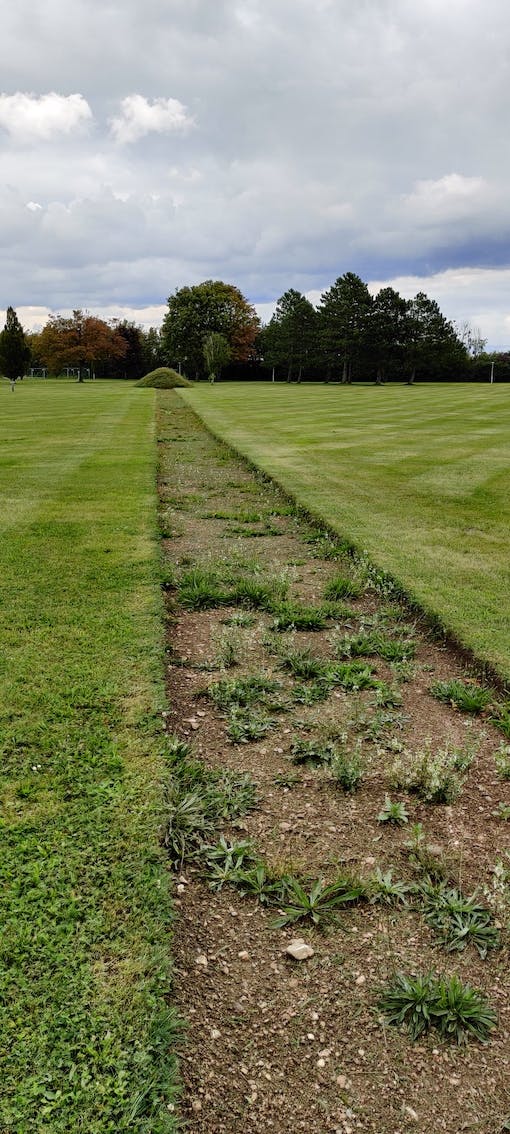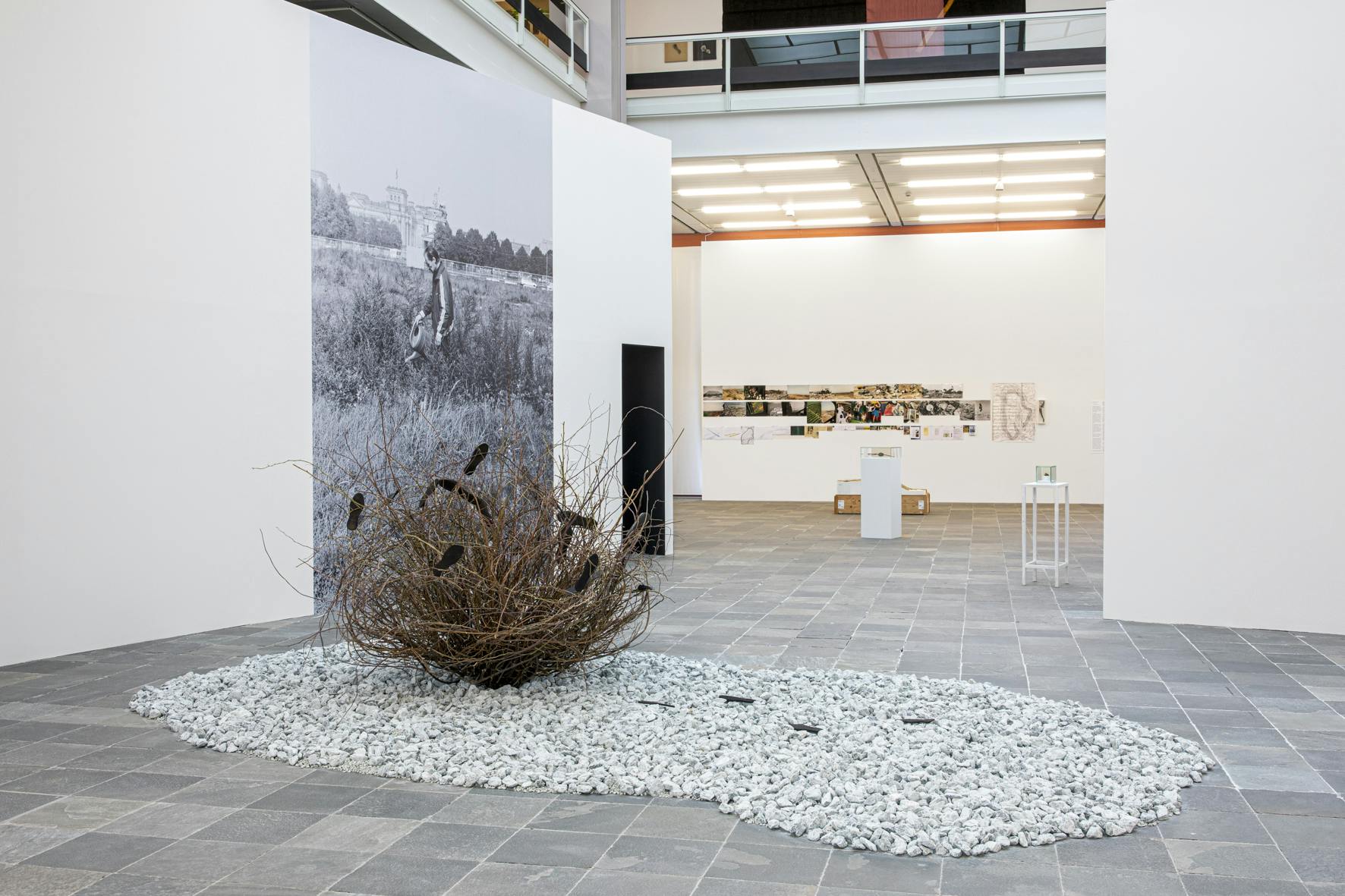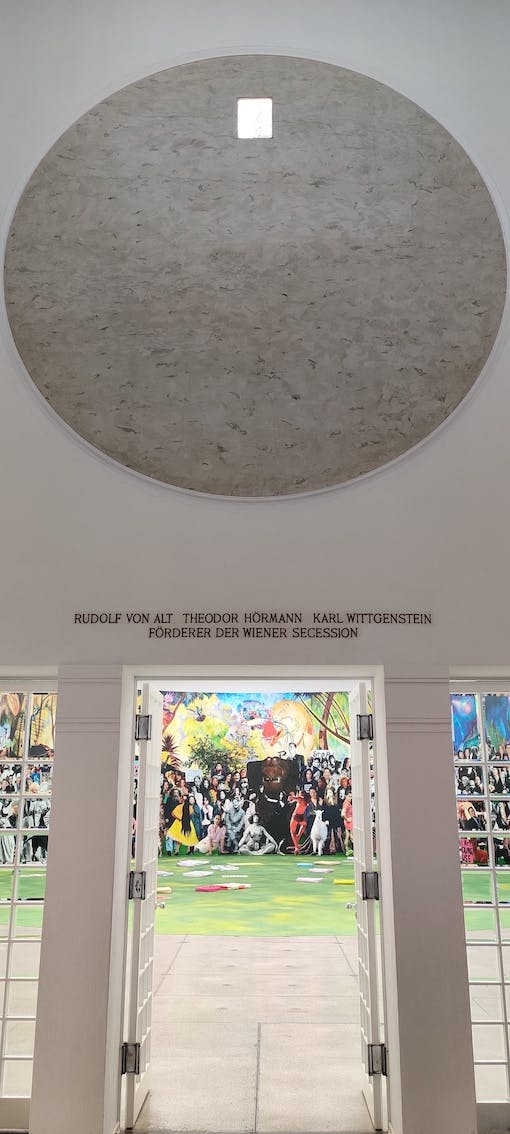Wir müssen der Natur Territorien zurückgeben die wir ihr widerrechtlich weggenommen haben.
(F. Hundertwasser)
Belgium, August 2021. Following a recent reform of property law and after long and considered deliberation in legal circles, it is suddenly permissible to enter a neighbour's garden to look for your cat or ball, without having to ask permission beforehand. Ground-breaking, the way our constitutional state is making headway and is concerned with the welfare of those who live next-door to each other in this densely populated country of housing estates and urban sprawl. We no longer have to live in each other’s pockets – at long last! And a good neighbour is worth more than a distant friend, right? Will the neighbour’s back garden become ours to a degree, and vice versa? Or has this ruling opened up a can of worms, paving the way for a whole load of additional neighbourly squabbles and petty-bourgeois frustrations? How sacred is the Flemish garden anyway, that dreary private realm of manicured lawns, blue gravel, and ludicrous statues? And what does it mean to live side by side as good neighbours, a thorny political issue in Belgium as of old?

Austria, September 2021. Those who enjoy a certain privilege will be pleased to hear it is once again possible to travel through Europe without any restrictions. So I decide to take the night train to Vienna, a fourteen-hour ride that excels in charm rather than sleeping comfort. I stay in this city for nine days, and that is hardly enough to explore the pretentious metropolis that was once the navel of the powerful Habsburg Empire with Belgium Austrianacum as its backyard. Ambling through Vienna, it is impossible to ignore the omnipresent bombast, a kind of historical coquetry expressed in a profusion of Baroque buildings and sculptures, wide avenues and majestic museums, fin-de-siècle glamour, Kaffee- und Gasthäuser. Sometimes, it seems like the city is frozen in time, as if an immense bell jar stands over the city like over a well ripened piece of cheese. The soul of the old continent, as it is called, drenched in melancholy: a longing for what once was, but will never be again. Sehnsucht, Freud wrote in Beyond the Pleasure Principle (1920), is not only concerned with preserving the existing situation, but wanting to return to a former state. Thus, Vienna remains the city of pounding horse-drawn carriages, kitschy Klimt souvenirs, ticket sellers in Mozart outfits (about which, by the way, this work by Jelena Juresa) and green Dürer hares atop the roof of sausage stalls. But life here is comfortable, if not too comfortable. Every year, the Austrian capital makes the shortlist in the global ranking of most liveable cities. I usually have reservations about cities with the qualities of open-air museums, but it would be unfair to typecast Vienna that way. There is, indeed, a lot going on in Vienna in terms of contemporary art and culture, at least for those who have an eye for it.

157.46 × 2 × 0.2 m, 2019–2021. Photo: PV
One of the reasons I am here is for a series of interviews (supported by Corridor) on the artistic legacy of Lois Weinberger, the Austrian artist who died unexpectedly last April. He is now being honoured posthumously with an exhibition at the Belvedere 21 museum, plans for which, incidentally, were drawn up by the artist himself. Weinberger's work was twice included in the documenta, and is significant in the way he managed to reconcile radical ecological thinking with a poetic signature. His art is an experimental form of thinking, as Philippe Van Cauteren (who exhibited with him at the S.M.A.K. in 2005) notes in the accompanying catalogue:
“Lois Weinberger doesn't make works of art, but indices, indications, remnants, notations, echoes, experimental models, ... (...) A work on paper is not a drawing but a way of thinking. An object is no sculpture, but a thinking machine.”
Weinberger's works are scattered around various places in the city and beyond, which prompts me to jump on a tram to the company premises of EVN (an energy concern) in Maria Enzersdorf, about half an hour from Vienna. An intervention by Weinberger was recently completed there, a 15-metre strip, where the top layer was scraped off the cultivated lawn. At the end of the strip, the soil is piled up high. Along the entire length, spontaneous, wild vegetation - so-called ruderal vegetation (weeds to you and me) - is systematically taking over the green wasteland that is EVN's back garden.

During one of the conversations, I learn that Lois Weinberger and Erwin Wurm - who shared a studio from 1988 to 1999 - were sometimes at odds over garden maintenance. Wurm, who cultivated his own garden immaculately, could apparently become annoyed with the way Weinberger would allow nature to take over. Il faut cultiver son jardin, all well and good, but it's the way you do it. What does that say about the difference between the two artists? Are such anecdotes too personal, or is what is personal also political?
In the Belvedere exhibition, I stare at an enlarged photograph of Lois Weinberger watering plants with a watering can, with Berlin's Brandenburg Gate in the background. The artist as gardener, could it get any more political? Here, he is not a heroic warrior, but a keeper, a carrier, a carer, a caretaker. In the same way, the watering can is not a weapon, but a container, a recipient. This is the symbolic eloquence of Weinberger's work, in all its deceptive simplicity. Just read Ursula Le Guin on the subject - it doesn't always have to be Deleuze & Guattari, after all. Next to the museum is one of Weinberger's famous Wild Cubes (1991-2011), a large, enclosed iron cage where spontaneous vegetation is given free rein and we, the spectators, are excluded. Is the wild cube at odds with the white cube? Not necessarily, it is the dialogue between the two that matters.

Lessing wrote in the 18th century that literature and the visual arts would do well to behave like “two friendly and equitable neighbours” who, while allowing “slight aggressions” onto the “extreme frontiers” of their property, “do not permit the one to take unbecoming liberties in the heart of the other’s domain”. His Laokoon treatise was decisive in bidding farewell to the often academic and descriptive Baroque and Rococo. In addition to Romanticism, it also influenced the overall vision of the Vienna Secession: the arts must be freed from the academic shackles, and strengthen each other in their interconnection and delineation. Moreover, the Secession building (1898) by Joseph Maria Olbrich is considered the first artist-driven white cube, with the winged words on its facade: Der Zeit ihre Kunst, der Kunst ihre Freiheit (To each time its art, to art its freedom), a slogan that was hijacked just a few years ago by the new, conservative coalition government ÖVP-FPÖ led by populist Sebastian Kurz. This, of course, (link: met with fierce criticism from the artists who still sit on the board of the Vienna Secession.
On the ground floor, Dominique Gonzalez-Foerster is showing an immense group portrait of 24 by 5 meters, a collage of intellectual and artistic kindred spirits beyond the limitations of time and space. Among others, we recognise Diego Rivera (one of his murals was the inspiration), Lou Andreas-Solomé, Cindy Sherman, Rosa Parks, Chantal Akerman, James Baldwin, Paul B. Preciado, Pina Bausch, Franz Kafka, Greta Thunberg and Otobong Nkanga. Her idea for a panoramic tableau, accompanied by tropical bird song, sprang from a vision:
“… woke up in the middle of the night and had a vision. We were close to a small volcano with a gentle lava flow, the vegetation was tropical, there were hummingbirds and llamas … my body was multiplied in several apparitions … surrounded by inspiring friends, humans and non-humans, from now and earlier times. it was a beautiful, joyful, almost operatic crowd, like a march, a protest, an excursion …”

Later that evening, I ended up in the WAF Gallery, where a number of artists (Christoph Meier, Ute Müller, Robert Schwarz and Lukas Stopczynski) had reconstructed the office of the Brussels Etablissement d'en Face, complete with its contents. The artistic tour de force is a kind of sequel to a replica of the famous Loos Bar in Vienna, which they built four years ago in the basement of Etablissement. The intention is to have the office staffed by the Brussels crew during the month of September. Etienne Wynants was already there for the opening (see photo). This mimetic mirroring of spaces is, therefore, also one of the art scenes, and shapes - in a jovial but clever way - the artistic dialogue between both capitals, as distant neighbours and as good friends, even without having lost anything in each other's garden.
Also in part 2: viennacontemporary, Curated By, Kunsthalle Wien.